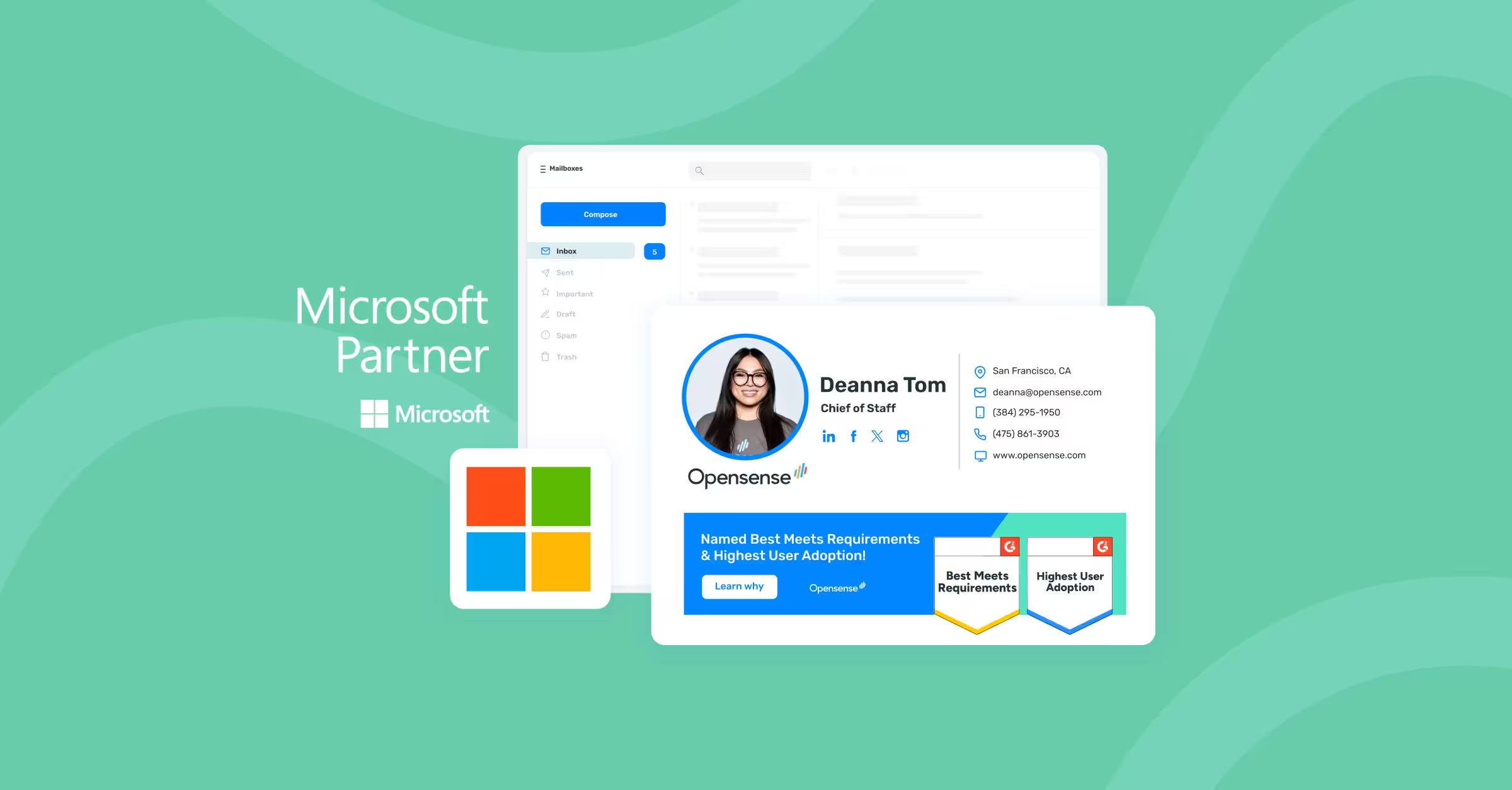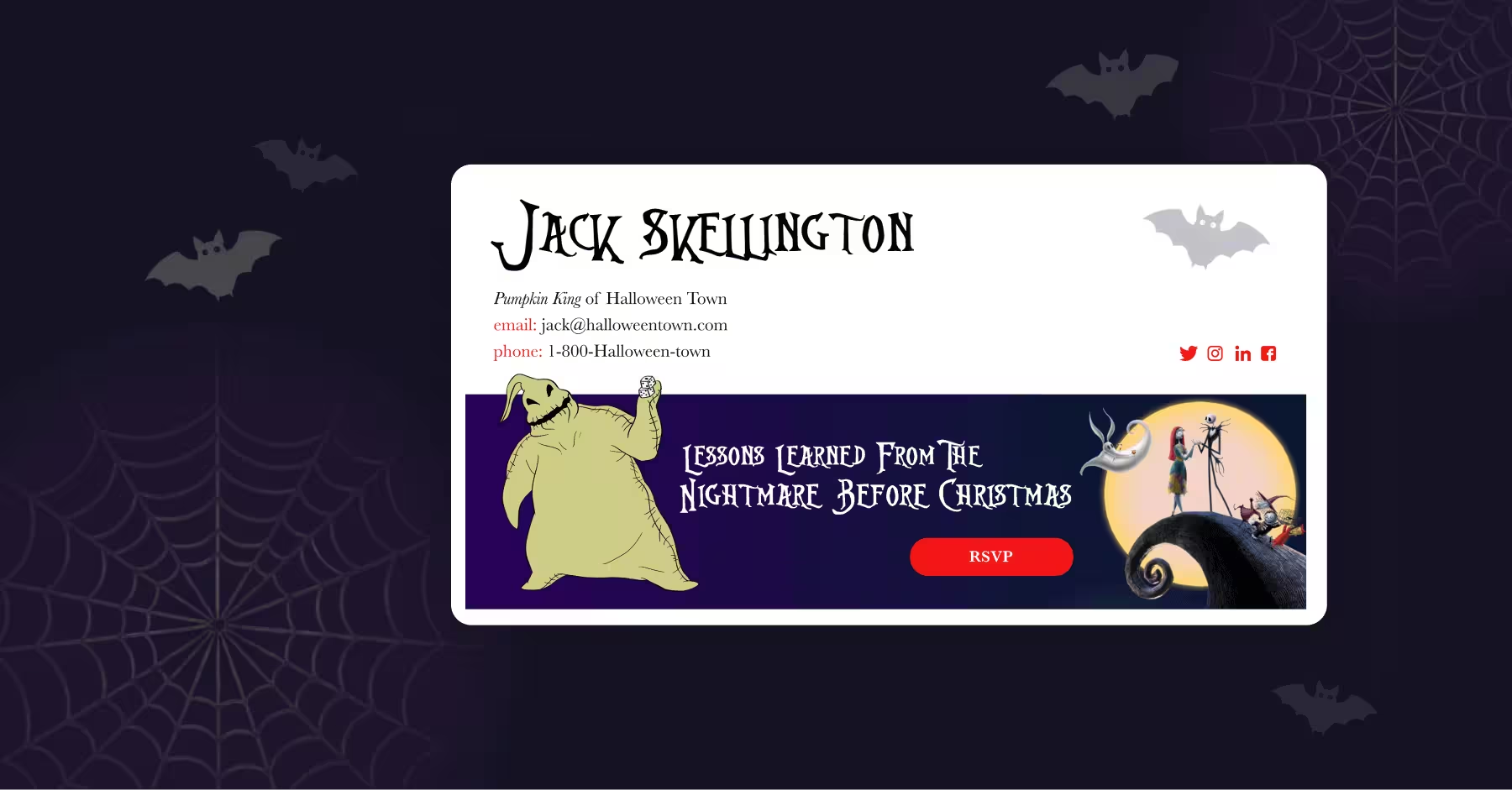
4 Important Ways Email Signatures Protect Your Brand
Every email an employee sends is an opportunity to strengthen brand awareness and communicate brand value and commitment. And it’s sitting right there with every email sent from your company - the email signature.
Poorly designed email signatures, or emails without a thoughtful signature, can have a negative impact on a company’s reputation. Email signature faux pas unfortunately are a common occurrence in the business world.
We all know the person who gets "creative" with their email signatures: incorporating controversial quotes, background stationary, or large signature images that turn into attachments. At best, these things fail to represent your brand. At worst, they end up hurting your company image.
With the number of emails sent per day averaging a staggering 269 billion (and growing), you can’t afford not to control this valuable piece of real estate. However, it’s often an overlooked communications channel, or too cumbersome to manually control. The problem is even more of a challenge in large organizations with multiple locations and departments. Let’s face it - who wants to send around messages to every employee asking them to update their signatures over and over again? As they say, ain’t nobody got time for that!
But the email signature is so much more than an email signature marketing opportunity. A company-wide email signature management framework helps you maximize company email, ensure brand protection - and get the most out of every email sent from your organization.
Here are four important ways email signatures protect your brand:
#1 - Brand Alignment
Inconsistency in your branding can make it difficult for customers to understand your brand value and commitment. It also makes it challenging to align your messaging with other marketing campaigns or to help drive new business as a whole. Centrally managed email signatures give you control over all elements of this valuable space. You no longer need to worry about people adding bulky images, unprofessional quotes, or linking to inappropriate content.
Consistency builds up trust in your brand. It also gives people a way to associate with your brand as they click through to landing pages or your website. It sounds simple, we know. But you don't want the email signature to use completely different colors, fonts, taglines, or worse.
Unified messaging and formatting also conveys a professional impression to everyone communicating with your company. If one person has a 10-line email signature including everything but the kitchen sink, and the other has a minimal signature including only the company name, it can leave people wondering if that lack of attention to detail transfers into every piece of your business (i.e., poor customer service, slow response time, incorrect shipping addresses, or more).
#2 - Sales Efficiency
Email signatures are an ideal channel for generating interest in your products or services. Each department has a different set of potential customers they're communicating with, so you can't take a one-size-fits-all approach.
Roles-based messaging gives you a way to customize outbound email signatures based on the most likely messaging that can get results. You turn every employee into a sales leader, which can help boost your lead pipeline and revenue.
Full control over the email signature also gives you the opportunity to match the messaging up with currently running campaigns. This tie-in can help generate better brand awareness with highly targeted messaging, which ultimately results in more leads (read: pipeline and forecast predictability), and revenue. Also, if you have limited time promotions, changing the email signature company-wide can give you the best visibility on the offer.
#3 - Performance Predictability
One frustration with uncontrolled email signatures is that you have no way to track their performance. A marketing framework with centralized email signatures gives you the ability to collect and analyze all types of data - beyond open rates.
You can optimize the signatures over time based on this information. Test multiple messages, formats, attachments, and links. Some metrics to look at include:
- Click through rate: Discover which links and calls to action attract the most visitors. Sometimes you can nail the perfect combination of landing page and call-to-action (CTA) and bring in a lot of traffic. When you're customizing email signatures based on role or department, you have a lot of variables to work with that can be successful.
- Conversion rate: How many visitors convert into a lead or a customer? The email signature should provide enough information to set some customer expectations even before they click. The branding should be consistent with what they're about to see on the landing page. Clear CTAs can drive high engagement and improve the performance for your campaigns.
- Customer lifetime value: How much revenue does the customer generate over their lifetime? Some buyers are more profitable than others, and you can focus on building more resources for the productive segments.
- Deal size: How big are the deals when they close? In B2B sales, some employees have greater access to decision makers. They can drive the biggest deals in the organization with a top-performing email signature that's customized for that segment.
- New customers: Are you seeing customers who are new to your company? You can use email signatures that lead to educational resources to help these buyers get the most out of their new purchases.
- Returning customers: Your customer service and success teams spend a lot of time talking with current customers. Take the opportunity to announce new products or recommend items that help them get more out of their purchases.
#4 - Regulatory Compliance
With new regulations popping up (and steep associated fines) -- and with the GDPR deadline quickly approaching -- the email signature can be your best friend, or your worst enemy. You don't want to run into situations where your organization is in legal hot water because of a lack of appropriate disclaimers. Can you change disclaimers on the fly? Does your legal department need different language than someone in technical support? Do you need to add specific functionality to the signature to meet certain requirements? Follow your industry and other regulatory compliance requirements to stay current -- and then take advantage of a centralized email signature platform.
Email signatures are often the last communications channel that anyone thinks about, but they bring so many benefits to your organization. Whether you want to drive new leads, refine your corporate messaging, or reduce the chances of a compliance issue, getting company-wide control over this valuable email real estate is a must-have part of your marketing - and business - strategy.
Want to learn more about how Opensense can help you protect your brand? Get a live, personalized demo today!


.svg)



.svg)



